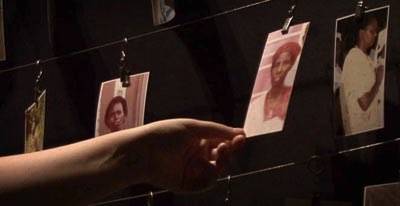Encounters with conflict and peace
Malaria and wild beasts

One of the first pioneers was Jean-Baptiste Munyankore. “We went off in a little reconnaissance group. Suddenly, going through the gigantic savannah, we found ourselves face to face with a herd of elephants. We turned right back with big long strides, because until that day we had only been close to chickens and goats.”
Jean-Baptiste arrived here in 1959 with his wife, his younger brother and grandmother. Like many of the other settlers here, they were escaping intimidation in their home villages in northern Rwanda, where Hutu extremists had been setting houses alight while people were sleeping.
To get them out of harm’s way, the local Belgian administrator told them to pick a foreign country where they could be exiled, but many, including Jean-Baptiste, chose to stay in Rwanda. An army truck arrived. “We were only allowed to leave with the shirts on our backs and nothing else,” he said.
First settlers in the marshes
They travelled overnight on the back of the truck, and as the sun rose the next morning, they found themselves at the log bridge over the Nyabarongo River. “We opened our eyes to a land of savannah and marshes... I am not exaggerating when I say that the tsetse flies darkened the sky. To this day, I still believe the authorities presumed that these terrible tsetse would be the end of us.”

Year after year, new settlers kept arriving. Life was difficult and many died from typhus, dysentery and malaria. But among the mud and palm huts, town centres slowly developed. By the early 1990s, Nyamata had grown into a substantial town with a market, a church, a hotel and a secondary school.
In the Bugesera, unlike the rest of Rwanda, the population was fairly evenly split between Hutu and Tutsi. The local authorities - the mayor, the soldiers and most of the public officials - were almost exclusively Hutu but, for the most part, Tutsi herdsmen and Hutu farmers co-existed reasonably well. “No Tutsi ever visited any harm on a Hutu,” said one. "They were just as poor on the hillsides, their plots were no bigger, and they had neither more health nor education than the Hutus.”
Politics spoiled everything
“We felt at ease,” remembers Innocent Rwililiza, a teacher in Nyamata. “It was afterwards, around 1992, that politics came and spoiled everything.” In March 1992 Radio Rwanda broadcast a false report saying that Hutu leaders in the Bugesera were going to be murdered by Tutsi. The same year, a Hutu mayor was murdered because he refused to intimidate Tutsis.
After that, everyone started keeping to their own group.
Seven million stories

Sometimes no story remains. Entire extended families were wiped out with no relative to remember them - no photo to show they ever existed on this planet.
There were about 120,000 people living in the Nyamata district at the start of the genocide. In a little over six weeks only 50,000 were left. Five out of every six Tutsis had been killed.
These are a few of the stories from the people of the Bugesera…
< previous page | next page >
In this section
STARTING A GENOCIDE
Whose idea was it?
How did it start?
The foreigners are leaving
Hate radio
DETAILS
Roadblocks
The little things
INSIGHT
A simple plan
This new job
A strangeness of mind
Personalities
A good man
FOCUS ON THE BUGESERA
The Bugesera
Ntarama church massacre
A day in the marshes
MZUNGUS
The role of the west
Two French missionaries
A journalist's story
THE END OF THE GENOCIDE
The refugee crisis
A country with nobody home

Whose idea was it?
How did it start?
The foreigners are leaving
Hate radio
DETAILS
Roadblocks
The little things
INSIGHT
A simple plan
This new job
A strangeness of mind
Personalities
A good man
FOCUS ON THE BUGESERA
The Bugesera
Ntarama church massacre
A day in the marshes
MZUNGUS
The role of the west
Two French missionaries
A journalist's story
THE END OF THE GENOCIDE
The refugee crisis
A country with nobody home

